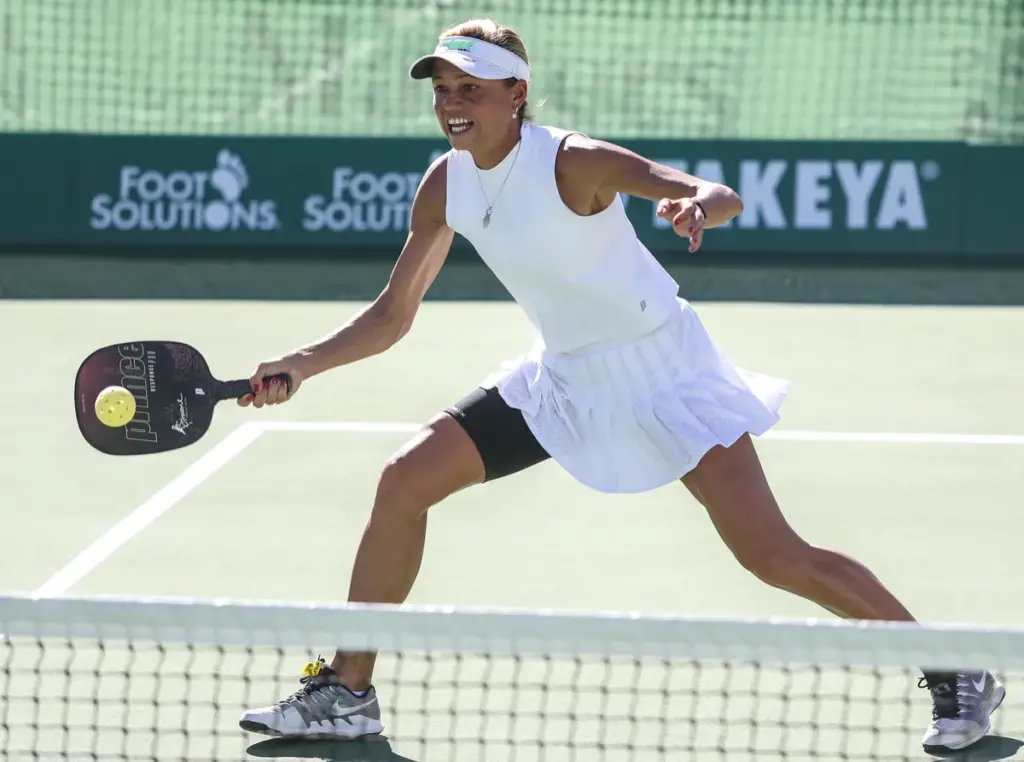Pickleball is gaining rapid popularity in America and other regions of the world. It is becoming famous because of its easy gameplay and no age restriction. Many people in their 50s enjoy pickleball as it requires minimum stamina and is a great means to socialize. You can play pickleball with single or doubles players on the team. Most beginners know how to play pickleball double and its rules; however, only a few know about pickleball singles gameplay.
You are at the right place if you need to learn how to play pickleball singles. The good news is the rules for pickleball singles are much simpler and easy to get the hang of. Dive right in!
Pickleball Singles- What Is It?
Before we dive into the rules of pickleball singles, you need to know what it is. Well, pickleball singles mean that there is one player on each team. While in pickleball doubles, two players compete with two players.
While pickleball singles have relatively lesser rules, it can be physically taxing because one player must cover the entire court. One person on the team gets to serve and alternate sides when serving. On the other hand, pickleball skinny singles is also a game type where players divide the court into a symmetrical half or diagonal half. It makes it easier to cover the court and hit the ball with full force without losing much energy.
Here’s a complete video guide on rules for pickleball:
Rule to Play Pickleball Singles

Their rule of playing pickleball singles is the same as playing pickleball doubles, but there is a slight tweak. However, if you know how to play pickleball doubles, understanding the concept of singles will not be challenging. Here are some rules for playing pickleball singles:
Rule # 1: The Server Gets the Points
The rules for pickleball singles are the same as pickleball doubles, where the server gets the points. One out of two players get to serve the ball, which is decided through a toss. The server always stands at the right-hand side when serving, as the ball must move diagonally across the court. A player must use a backhand or underhand technique to serve so that the ball forms a diagonal arch.
Rule # 2: Server Score Points Upon Opponent’s Fault
Another rule that only a few people know is that the server gets the point when the opponent makes a fault. When volleying the ball, an opponent can make a mistake by stepping in the kitchen. Players cannot step on the kitchen line when serving or hitting the ball. On the other hand, if the ball goes out of the boundary, the opponent loses the point, and the server gains it. Lastly, the ball should always go over the net without landing in the kitchen area.
Rule # 3: Server Alternates Side
Due to only one player on each team, the player on the server side keeps alternating sides upon gaining scores. The players on the server side must initially start on the left side but alternate sides upon gaining a point. However, the serving strategy must remain the same on both sides as the ball goes diagonally across the court. The server stops switching sides and serving until they make a fault. If they volley in the kitchen area, the ball hits the net, or if it goes beyond the boundary, the ball goes to the opponent.
Rule # 4: Take At least One Ground Stroke
There are quite a few things that the server must consider to gain enough points to win. One of the things that a player must do is make a groundstroke. The groundstroke is a shot where you volley from the air. It is also called dink shot, which servers use to weaken the bounce.
It throws the opponent out of their comfort zone, and they barely get the time to think through the shot. A groundstroke is a server’s strategy to get the receiver team under pressure and gain a competitive advantage.
Rule # 5: Winning Margin of 2 Points
The winning score depends on the players, and they mutually agree upon it. However, people mostly keep 11 as the winning score, and the team to reach it first is declared a winner. The winning team must have a two-score margin to win.
In the pickleball doubles, the scorecard has three digits (0-0-2), and the last number represents the player number. However, the pickleball doubles only have a two-digit score (0-0); the first number shows the server score, while the other is the receiver score.
Some Serving Rules You Must Remember

In pickleball, singles, and doubles, there are some ground serving rules that you must remember. Often, the serving team loses points because they make minor mistakes. However, you want to avoid making the same mistakes; hence, we are stating some important serving rules. Here are some:
- It would be best to serve using backhand or underhand technique and never hit the ball from above.
- Your pickleball paddle should touch the ball from the underside because it helps form a diagonal arch.
- When making contact with the ball, your pickleball paddle should always be below the highest point of your wrist.
- The server can only switch the side when they gain a point; if they lose a point, the ball goes to the opponent team.
- A server gets another chance if the ball hits the proper service court after hitting the net.
- You cannot let the ball go straight across the court; it always hits diagonally, forming an upward arch.
Conclusion
Learning to play pickleball singles is quite easy, especially if you know about pickleball doubles gameplay. However, there are some ground rules that you need to pay attention to. Only the server gets the points, but there are some rules to follow when serving. It is best to keep serving rules in mind to gain maximum points.

I am Michael Wanner, an experienced and educated expert in the field of pickleball. I hold a degree in Sports Science from Cleveland State University, Ohio, USA. My expertise lies in the technical aspects of pickleball and how to play it effectively. I have spent many years playing and coaching pickleball and have a wealth of knowledge to share with my readers. I am a valuable resource for anyone looking to improve their pickleball skills and strategies.